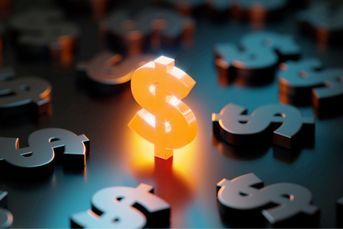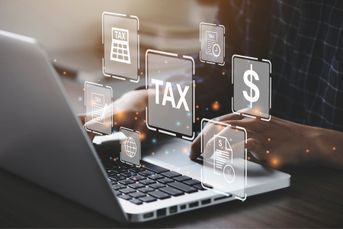Market rot produces bumper crop for tax-loss harvesters

Market volatility presents an opportunity to offset gains with losses. Is it worth the hassle? Experts say tax-loss harvesting can boost portfolio returns by as much as seven percentage points
U.S. investors shaken by recent swings in the stock market may make the most of the declines with a strategy known as “tax-loss harvesting.”
Stocks fell the most in 14 months in the week ended May 7 and regulators are reviewing a plunge that briefly wiped out more than $1 trillion in U.S. equity values on May 6. Tax-loss harvesting may add as much as 7 percentage points to a portfolio’s return in the first year, and even after 25 years it may add 0.3 percentage points, according to a study by Pasadena, California-based money manager First Quadrant L.P. The strategy refers to the periodic selling of poor-performing assets to get the most out of losses.
“When markets get more volatile, tax-loss harvesting is more effective,” said Andrew Berkin, senior equity researcher, who co-wrote the study for First Quadrant, which has $17 billion under management. “If your portfolio has become out of balance because of the way the market has moved, you can use this event as an opportunity to rebalance.”
U.S. tax rules allow investors to offset capital gains with losses. Long-term gains on assets held more than one year are matched against long-term losses, while short-term gains are paired against short-term losses. The long-term and short-term results are matched against each other. When there is a net loss an investor can deduct as much as $3,000 against ordinary income. A loss of more than $3,000 can be rolled over to offset gains in future years.
Short-term gains are taxed as regular income and long-term gains are taxed at 15 percent. The long-term rate will rise to 20 percent next year, unless Congress acts. President Barack Obama has proposed that the higher capital-gains rate apply to individuals with incomes of more than $200,000 and married couples with incomes over $250,000.
“The fact that we haven’t recovered yet to where we were means that many investors probably still have a decent stockpile of losses on the books,” said Joel Dickson, a principal and tax specialist at Vanguard Group, the largest U.S. mutual fund seller, based in Valley Forge, Pennsylvania.
Capital losses may be worth more next year if tax rates are higher, while capital gains cost less this year while rates are lower, Dickson said. For those who expect their tax rates to rise, this year may be the time to realize gains, regardless of whether there are corresponding losses to match against them, he said.
“Some of the rules of thumb may not hold,” Dickson said.
Investors with long-term gains may want to sell this year to lock in the 15 percent tax rate, then buy back the same stock to reset their tax basis before rates go up, said John Battaglia, director in the private client advisor group at Deloitte Tax LLP, a unit of Deloitte & Touche LLP, based in New York.
“A lot of people are thinking of doing that without taking losses, but it would be even more advantageous with them because they wouldn’t have to pay the capital-gains tax,” he said.
There is a caveat to tax-loss harvesting: the wash-sale rule. The Internal Revenue Service prohibits investors from taking a loss if they buy the same shares within a period that begins 30 days before a sale date and ends 30 days after.
For those who are thinking about taking losses because of current market volatility, it’s important to consider their entire portfolios, Deloitte’s Battaglia said. Many investors took significant losses during the market decline of 2008 when the Standard & Poor’s 500 Index fell 38 percent, and still have tax losses they can use in future years, he said.
“For people who already have substantial tax loss carryforwards, selling today to take a loss doesn’t matter,” Battaglia said. “I advise clients to take a tally of their gains and losses throughout the year.”
For younger investors, who expect that the market will rally again, stockpiling can still make sense, First Quadrant’s Berkin said. Investors believed they had plenty of losses after the tech bubble burst in 2000, he said.
“Just when you think you have all the losses you need for the rest of your life, the market rallies,” Berkin said. “Having additional losses can prove useful.”
Learn more about reprints and licensing for this article.








